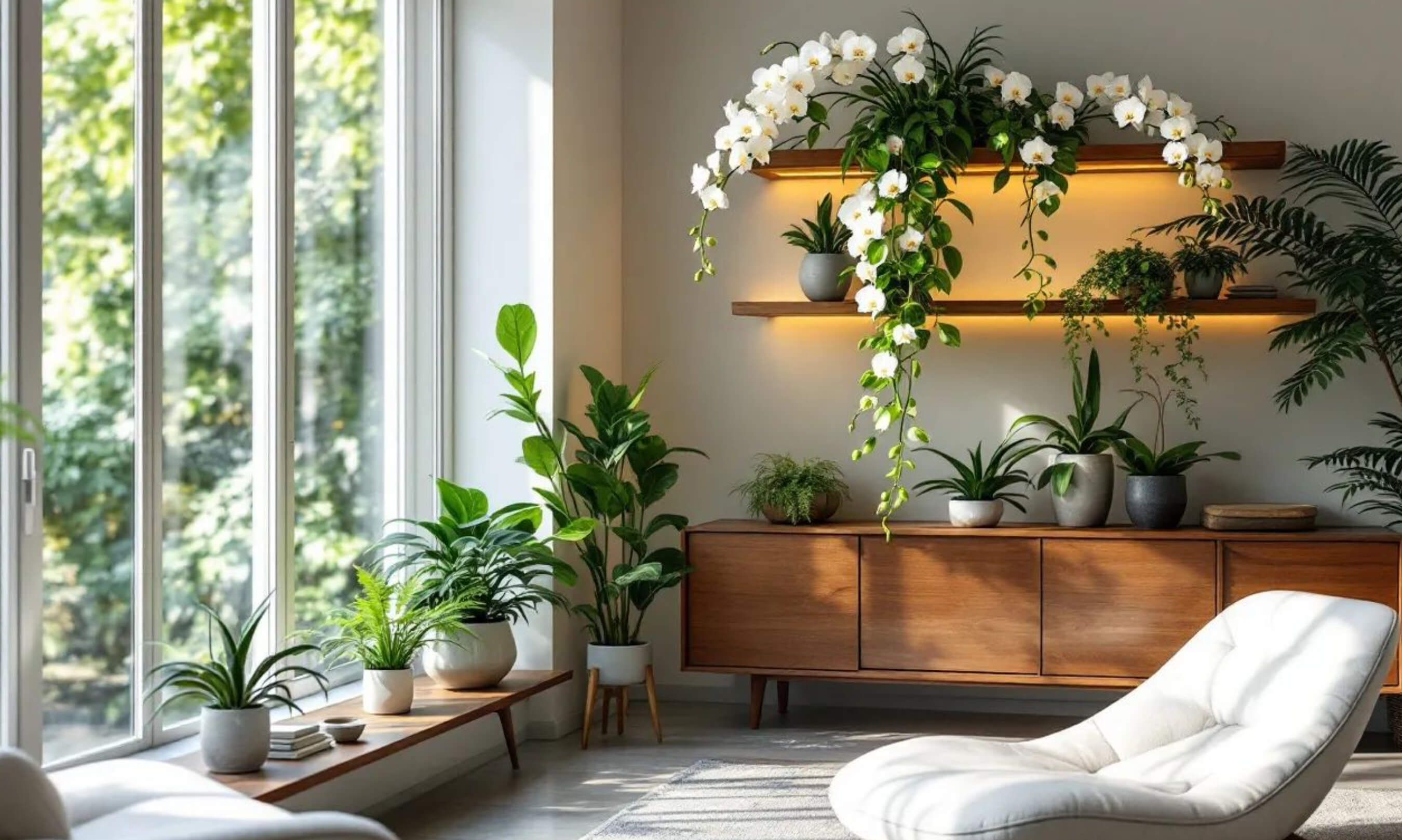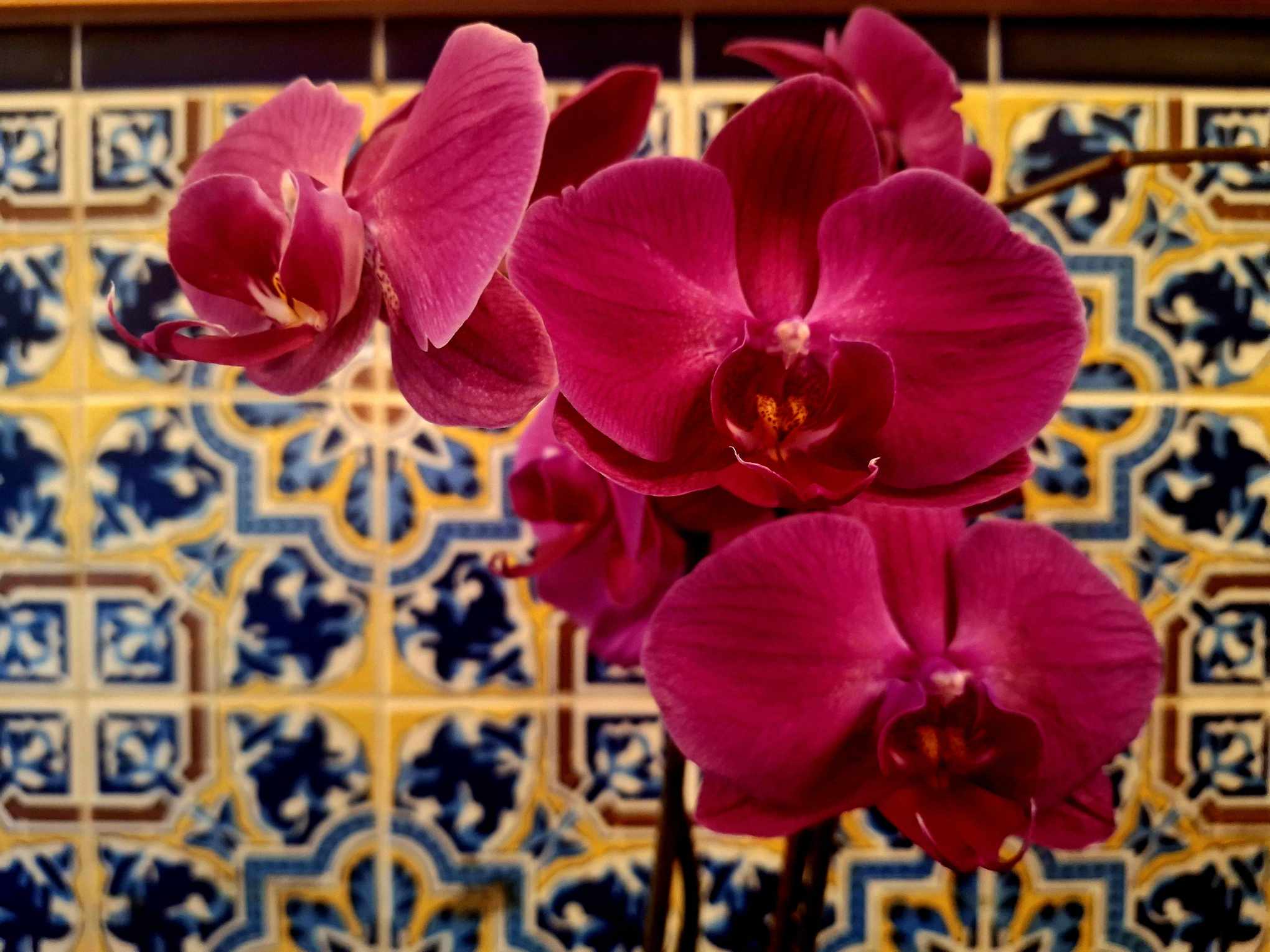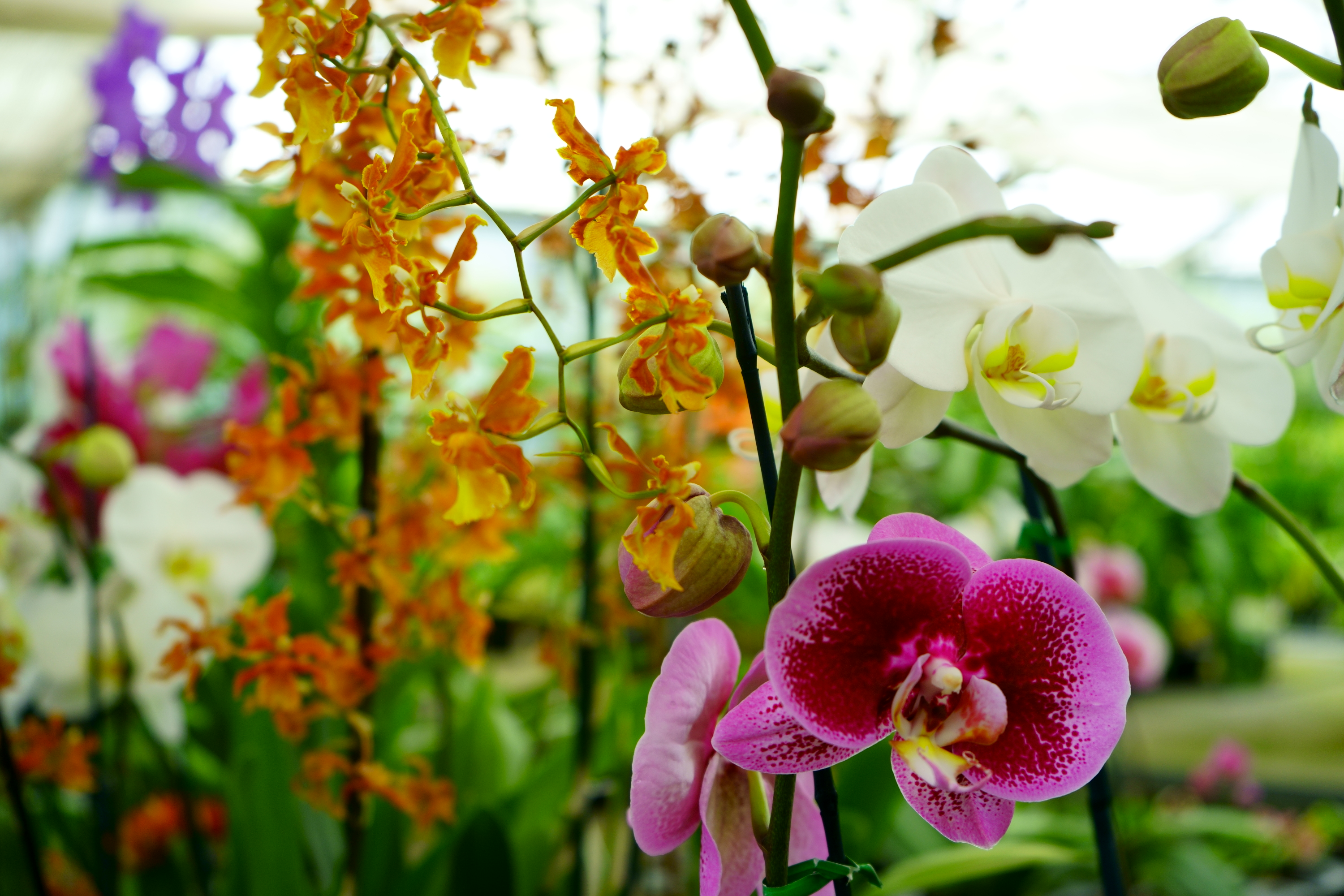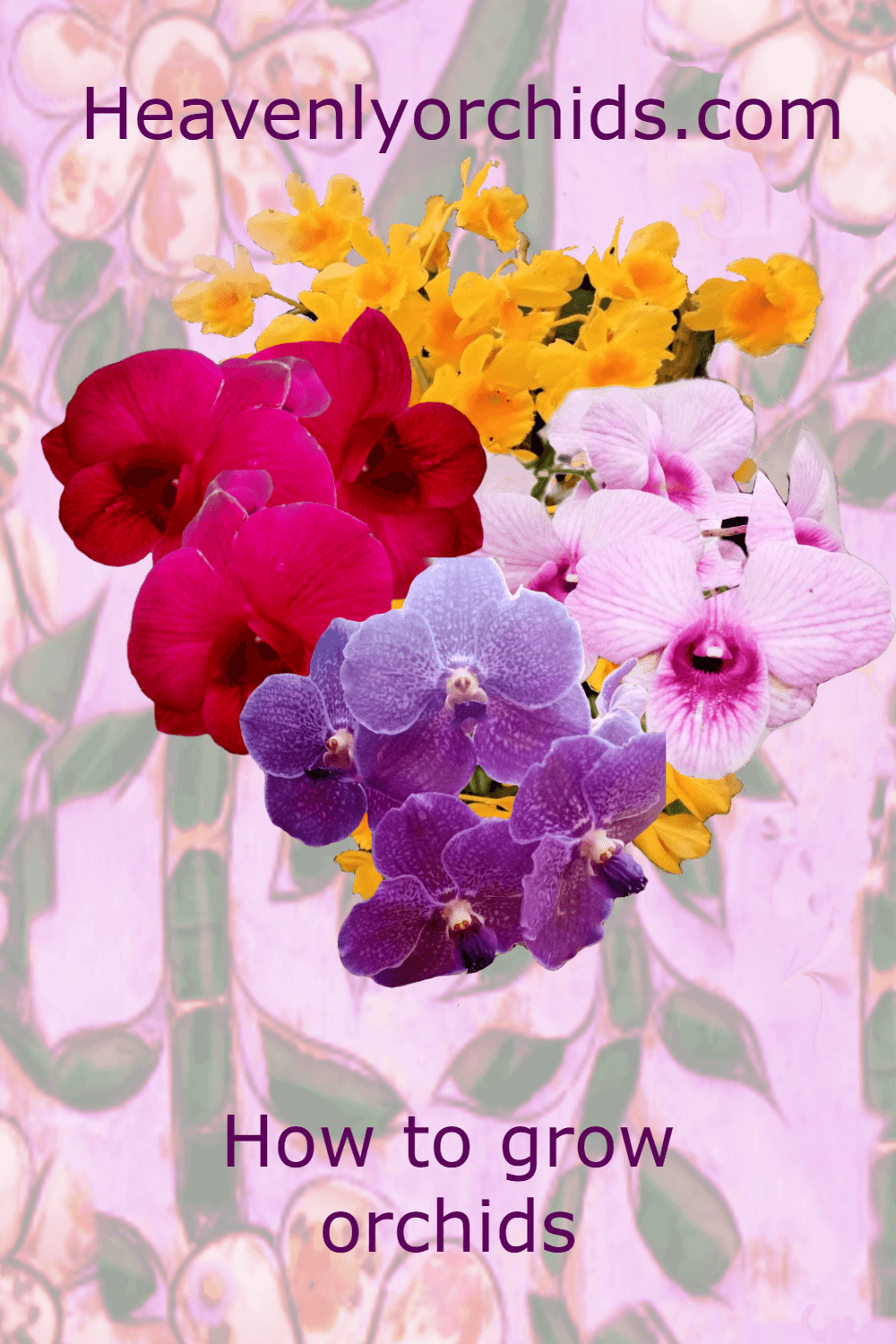How To Grow Orchids
Welcome to Heavenlyorchids.com, if you are new to learning about how to grow orchids, you will find lots of helpful information on our website. Orchids are a little different from other plants that you may have grown and have different growing requirements, so there is a little bit of a learning curve. The first thing you will notice and may even be confused about is that orchids are not grown in soil. Orchids are mainly epiphytes or lithophytes, also sometimes referred to as air plants. This means that they use their roots to anchor themselves in trees or on rocks and do not take any sustenance from their host. Orchids in their natural habitat receive most of their water and nutrition from dew, rainfall and the runoff of bird, other animal droppings, and decayed leaves and fruit. They absorb moisture and nutrition through both their roots, and leaves, but more so through their roots.
Growing Medium
One of the first things we need to know about when learning how to grow orchids is the growing medium. There are many different kinds of orchids and they all have different water requirements, which is a factor in their growing medium of choice. However, one thing that most orchids have in common is that they like to have air circulating around their roots. If you are living in a tropical climate and can grow outdoors, many orchids can actually be grown without any growing medium at all. However, if you are not living in a tropical climate, then you will need to house your orchid indoors in a pot with a suitable growing medium. The main growing mediums that orchid growers use are fir or pine bark, sphagnum moss, and LECA (lightweight expanded clay aggregate). As a beginner it would be best to begin your orchid growing experience with an orchid that is growing in fir or pine bark. Orchids grown in fir and pine bark will be the most forgiving medium to learn with. One of the number one reasons for orchid growing failures is overwatering. Fir and pine bark drain and dry out quicker than sphagnum moss. If you are learning to grow your first orchid and it came growing in sphagnum moss, then it is likely that the orchid that you are growing likes a fair degree of moisture. Sphagnum moss retains a lot of water, but you should let your orchid dry out between watering's. One way to tell if the moss is dry is by pressing on it with your finger. If it has a crunchy sound, then it has dried out and it is now safe to water your orchid. Leca is mainly used in semi hydroponic or self watering systems.
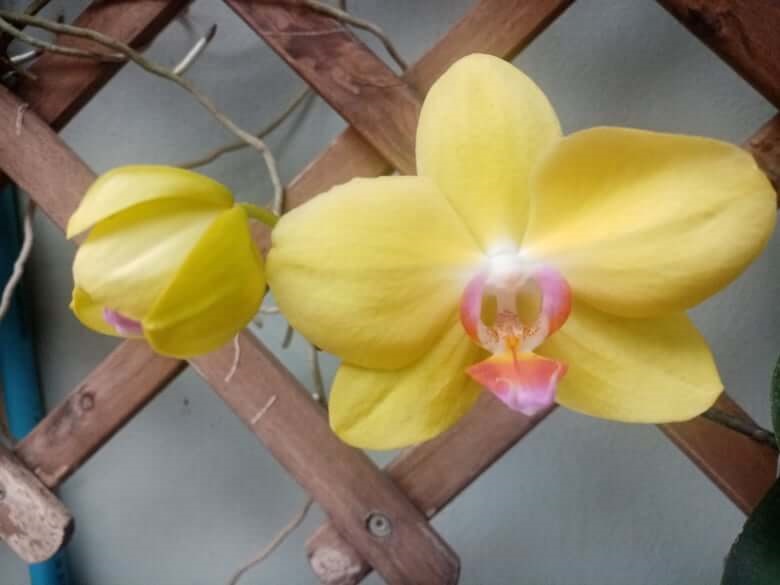
How to grow orchids: Watering
For many people who are learning how to grow orchids for the first time, proper watering can prove to be the most challenging aspect to learn. Each species of orchid has different water requirements, needs, and likes. Even different plants within the same species can differ slightly depending on their growth stage. Different climates and seasons will also dictate how much water a plant needs. So there is no one size fits all instructions to cover all the different factors. Just like how in the stock market they say to buy low, sell high, when it comes to orchid watering, don't water too much and don't water too little. And the question everyone always asks in both instances is "well, how do you know when the right timing is?" The answer to that comes with experience. Watering too much will lead to root rot and possible disease, watering too little can lead to roots shriveling up and dehydration. You can read more about how to water orchids by following the navigation tabs above or on this link here. One thing that can be very helpful when first learning about how to grow orchids, is to place your orchid in its growing medium in a clear see through plastic pot. If the pot shows condensation on the inside, this indicates that your orchid has sufficient water and there is no need to water. More orchids are killed with the kindness of watering too much than too little. In nature, many orchids grow in the tropics which have a distinct rainy season and a dry season. Many orchids can go a long time without rain, surviving on dew drops and moisture in the air. However, that being said, when growing orchids indoors, the air is most likely drier and there are no dewdrops coming from a tree canopy, so do not let your orchid get dehydrated.
Fertilizing
Watering and fertilizing are somewhat synonymous as you should give your orchid very light doses of fertilizer included in the water. All organisms on earth need food to thrive. Orchids do not need a lot of fertilizer to flourish, and do best with very, very light feedings on a regular basis, once a week. This means about 1/4 of the dosage recommended on the fertilizer packaging. The fertilizer packaging instructions most likely assume a once a month feeding and that is fine for the most part, if you are pressed for time. However, many orchid growers prefer to feed their orchids a much weaker solution on a weekly basis. If you would like to learn more about fertilizing and get even more precise than that, visit our page on advanced fertilizing to see the method that we recommend for most orchids.
How to grow orchids: Light
Orchids require bright indirect light to flourish. Many orchids such as Phalaenopsis will do well in low light conditions. Other orchids such as Vanda like brighter conditions to thrive. The main thing in common with most orchids is that they will not do well in direct sunlight. If you place your orchid in a location where it will receive direct hot sunlight, it will burn the leaves and most likely kill your orchid. This is another way that orchids are different from many other plants. In their natural environment most orchids like to grow in the shade canopy of trees. Be careful in choosing a location for your orchid. Place your orchid near an east or south east facing window out of direct sunlight. If necessary, you can supplement with artificial light. Follow the links in the navigation above to learn more about orchid light requirements and supplementation.
How to grow orchids: Temperature
Many of the orchids that are commercially available today originate from tropical regions. In their natural habitat they enjoy temperatures from the low 60's Fahrenheit (15 Celsius) to the upper 90's (38 Celsius plus). What this means for us is that we should avoid placing an orchid in a drafty area, choose a location that remains relatively warm if you live in a colder climate. One thing to note, some orchids require a drop in temperature at night into the mid to high 50's Fahrenheit (12 to 15 degrees Celsius) in order to induce flowering. This is something to keep in mind when you are first learning. Enjoy the journey and visit our other pages to learn more about how to grow orchids.
